#african rock python
Text
Why are snakes so adorable

Look at that pupper face
12 notes
·
View notes
Photo
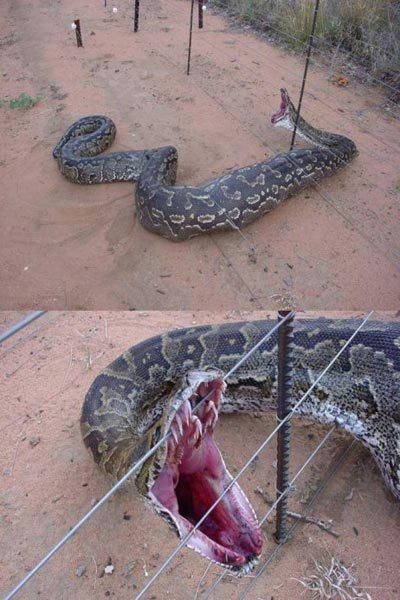
An African rock python biting an electric fence
#An African rock python biting an electric fence#python#serpent#electric fence#dead#death#animal kingdom#cobra#reptile#african rock python#aggressive#violence#Extreme Aggression#photography#biting
131 notes
·
View notes
Text
Iben Bia turning into African Rock Python
Iben Bia: Well, My Husband are best ever on my Life, I can wait to see Bride!
Lance: *Portal*
Iben Bia: Eek, Oh my Gosh that you?
Lance: Yes, I'm I Lance.
Iben Bia: Your are a Villain, I ruin my Parents.
Lance: Well them Iben, I going to Turning yourself a Snake.
Iben Bia: What the...*Screaming and Turning into African Rock Python*
Lance: *Laughing* So Long Sucker! *Portal*
Iben Bia: Agh, Where my....*Gasping* Oh my..I am African Rock Python?! *Screaming* Bruce, Bruce look at me I am African Rock Python! *Hissing*
Bruce Stone: *Screaming* You turning into Snake?
Iben Bia: Yes, I know Bruce I know. I had a Deal. *Coiled Bruce*
#iben bia#African Rock Python#bruce stone#balan wonderworld lance#Lance#fanfiction#balan wonderworld
0 notes
Photo
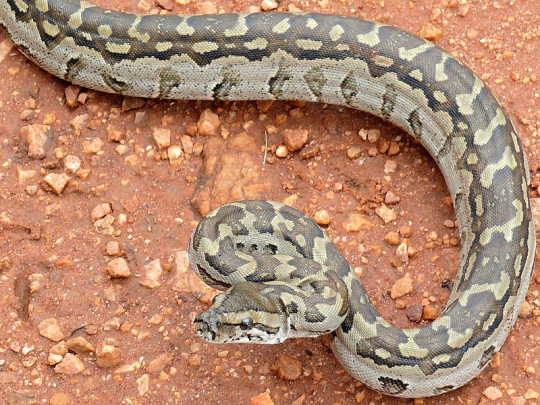
A juvenile Southern African rock python (Python natalensis) in South Africa
by Bernard Dupont
#southern african rock python#pythons#snakes#reptiles#juvenile#Python natalensis#python#pythonidae#serpentes#squamata#reptilia#chordata#wildlife: south africa#wildlife: africa
170 notes
·
View notes
Text
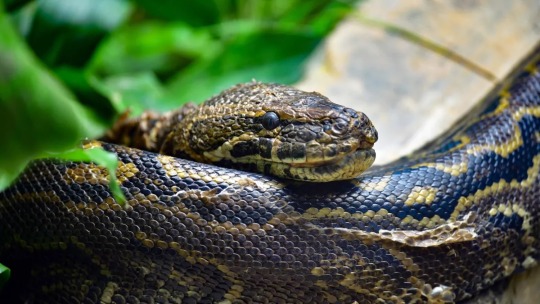
Central African rock python (up to 16.5 feet)
Central African rock pythons are Africa's largest snake, reaching lengths of 16.5 feet.
(Image credit: Michele D'Amico/Getty Images)
#michele d'amico#photographer#getty images#central african rock python#python#snake#africa#reptile#nature
18 notes
·
View notes
Text
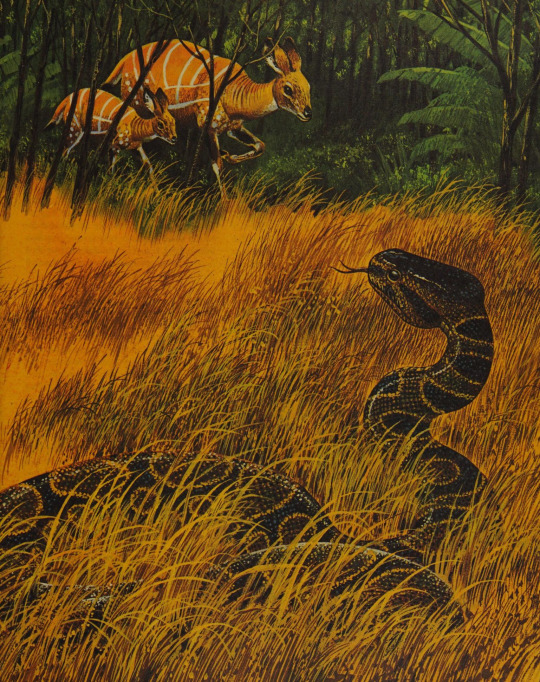
Album of Snakes and Other Reptiles, Tom McGowen, 1987. Illustrated by Rod Ruth.
129 notes
·
View notes
Text
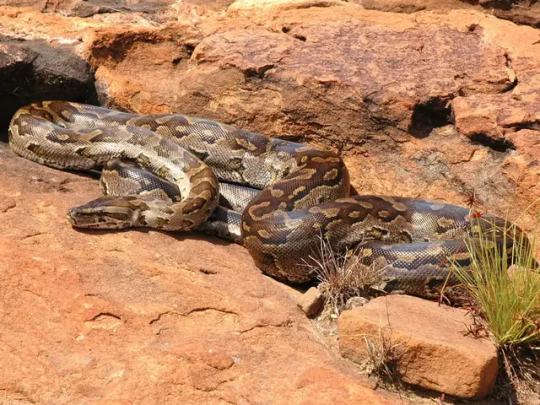


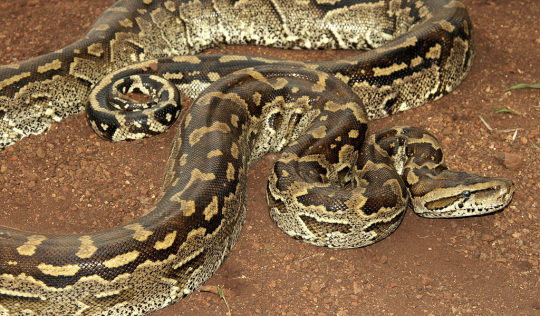


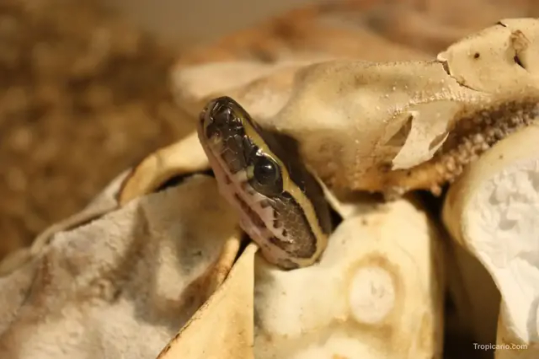



The Central African rock python (Python sebae) is a species of large snake in the family Pythonidae and one of the 10 living species in the genus Python, which is native throughout almost the whole of sub-Saharan Africa, from Senegal east to Ethiopia and Somalia and south to Namibia and South Africa and have become invasive in the florida everglades. Here they are found throughout a wide variety of habitats including including forest, wetlands, savanna, grassland, semidesert, and rocky areas. It is particularly associated with areas of permanent water, and is found on the edges of swamps, lakes, and rivers. They are a generally solitary non venomous species of constrictor which is known to feed upon fish, rodents, birds, monkeys, antelopes, bats, lizards, crocodiles, dogs, goats, sheep, pigs, jackals, hyenas, & big cats. On average Central African rock pythons reach around 9.8 to 16.4ft (3 to 5m) in length and 97 to 121 pounds (44 to 55kg) in weight, however individuals reaching up to 24.6ft (7.5m) and 214lbs (97kg) are not unheard of. African rock pythons have a relatively small, triangular head that is covered in irregular scales that are typically blackish to brownish-gray in color. The body is yellowish, gray-brown, or gray-green, with dark blotches that form a staircase-like pattern on the back. Belly scales are a white color with black specks producing a salt-and-peppery pattern. Mating occurs in the spring after which time the mother climbs inside an old animal burrow, termite mound, or cave and lay 20 to 100 hard-shelled, elongated eggs. The female shows a surprising level of maternal care not typical for snakes, coiling around the eggs, protecting them from predators, and possibly helping to incubate them, until they hatch around 90 days later. She then spends up to 2 weeks protecting and caring for the hatchlings. Under ideal conditions a central African rock python will reach sexual maturity at 3 to 5 years and live up to 30.
#pleistocene#pleistocene pride#pliestocene pride#pliestocene#cenozoic#snake#python#reptile#central african rock python#rock python#big snake
3 notes
·
View notes
Text
Snakes of Africa: Ball Pythons
This is the first of a series on African snake species, where I go through how they live in the wild and attempt to demystify some aspects of care and myths surrounding African snakes.
We all know the myths about ball pythons. They're from "a narrow strip in Africa," they don't need to climb, they don't need really high humidity...let's challenge some of those ideas!
If you don't know just how big Africa is, it's easy to underestimate how big the ball python's range is, too. I think it's easier to understand if you look at it on a global map:

That's a big area! Wild ball python habitats range from grasslands to forests, cutting through arid savannahs and even into rainforests.
Because the climate across the ball python's range is so variable, they are best understood as habitat generalists - they have perimeters they prefer, and they can find ways to adapt in different environments.
A large portion of the ball python's range is arid, and that leads to one famous fact about them: ball pythons love termite mounds, because they provide them with a nice and very humid area to nap. Even among people who know wild ball pythons love termite mounds, that's often used as reason to justify keeping them in too-small enclosures. After all, termite mounds don't sound like they're very big...
But they are.

Termite mounds are one of the reasons ball pythons are such good climbers.
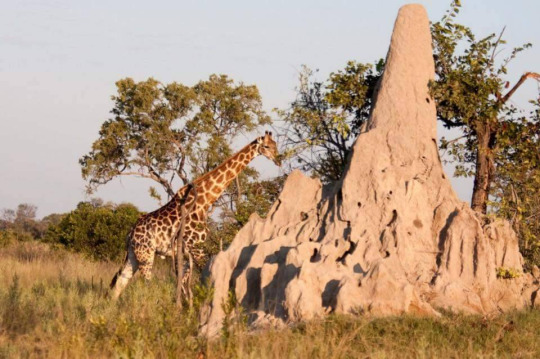
Despite their arid habitat, wild ball pythons (aside from seeking out termite mounds) will also seek out wet areas, such as streams and lakebeds. In captivity, humidity isn't something you should skimp on for a ball python. At least 60% humidity is essential, and closer to 70% is ideal, and a humidity box allows your snake to have an area that's close to 100% humidity at all times. Humidity boxes also allow for a range of humidity conditions, like your snake would experience in the wild!
An extremely common myth about ball pythons is that they don't climb and won't take advantage of enrichment. This couldn't be further from the truth! In the wild, ball pythons are excellent climbers and are known to even hunt in trees. Multiple studies surveying wild ball pythons have found nearly half of their subjects in trees. These are not solely terrestrial snakes.

Another stereotype about ball pythons is that they're "pet rocks." If you give them enrichment and look at their wild behavior, this couldn't be further from the truth! Wild ball pythons are observed as being very active snakes who will actively hunt and seek out food rather than relying on strict ambush predation strategies. That's one reason it's best to feed your pet ball python when you see them out and "hunting!"
Of course, wild snakes will be more active than pet snakes simply for the sake of survival, but their activity level in the wild is indicative of what it should be more like in captivity. Some inviduals are a bit lazy, sure, but by and large most ball pythons will take advantage of every inch of space you give them. Climbing branches, tunnels, and new things to check out are a must!

Because wild ball pythons are habitat generalists, that also clues us into what enrichment they most enjoy. In the wild, along with climbing (which they love!), ball pythons are also known to swim (though they mostly only due this when necessary) and dig burrows. In captivity, many pet ball pythons enjoy an occasional soak, so it's good to provide a big enough water dish for them to curl up in, and some individuals enjoy digging burrows. If you provide an extra few inches of substrate for your snake to dig in, you might be surprised by how much they enjoy it!
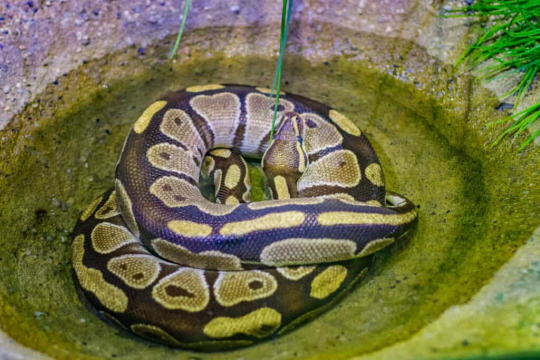
Now, let's talk about food! In the wild, ball pythons eat a wide variety of rodents and a lot of birds. In fact, their semi-arboreal habits mean they even eat a lot of bats when they can catch them! Unfortunately, one of the tricky things about their diet is that their favorite foods in the wild include shrews, jerboas, African soft-furs, rufous-nosed rats, and other rodents that are just honestly impossible to source for your pet ball python. In captivity, a diet of rats is appropriate, and unfortunately it can be hard to provide variety to many ball pythons simply because a lot of them just prefer more hard-to-find rodents and will resist switching back to rats. For good, non-picky eaters, though, other rodents and chicks make excellent treats.
Ball pythons have a reptutation as very picky, finicky eaters, but honestly it's my experience that this effect is much, much lesser when their husbandry is consistently appropriate. Making sure to provide adequate humidity seems especially important in ensuring your ball python is a good eater! Additionally, ball pythons tend to like it a bit hotter - 90 F (32 C) is a good hot-side temperature for most ball pythons.
If there's anything to take away from this brief look into wild ball pythons, it's this: these snakes will thrive best if given the opportunity to engage in more natural behaviors. Climbing, digging, and exploring are essential for any ball python!
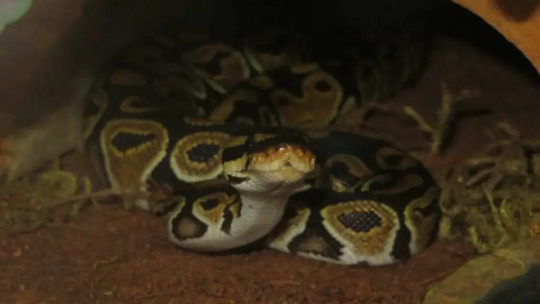
Ball pythons are so much more than just "pet rocks." If you provide them with space and enrichment, you'll be delighted by what fun, active, curious, and engaging pets they are!

(This message is approved by my sweet girl Miriam.)
532 notes
·
View notes
Text

Red Forest Duiker (Cephalophus natalensis)
Family: Cattle Family (Bovidae)
IUCN Conservation Status: Least Concern
A tiny species of forest-dwelling antelope (growing to only around 43cm/16.9 inches tall at the shoulder,) the Red Forest Duiker is native to south-eastern Africa where it mainly inhabits dense high-altitude or coastal forests with reliable year-round access to freshwater. While many grassland-dwelling antelopes live in large herds to provide "safety in numbers" in the absence of sheltered areas in which to hide from predators, this species' densely-vegetated habitat renders defensive group-living unnecessary (with the small bodies and plain brown colouration of adult Red Forest Duikers allowing them to easily blend in with their surroundings,) and as such they typically live alone outside of breeding or raising calves (although small groups of up to 3 individuals, often close relatives, are occasionally seen foraging together.) Both males and females of this species are highly territorial, using strong-smelling secretions produced by glands beneath their eyes to mark out territories, typically choosing areas with good access to water, food (which consists mainly of fruits, flowers and soft leaves, as compared to other antelopes they have only a rudimentary ability to digest tough, fibrous plant matter) and vegetation to hide within; when faced with potential predators (such as Leopards, Crowned Eagles and Southern African Rock Pythons,) Red Forest Duikers will initially freeze in place in hopes that they have not been seen, and if the predator then begins to approach they will rush towards the undergrowth in a series of short bounding leaps. Female Red Forest Duikers may breed at any time of year, giving birth to a single calf at a time after a gestation period of around 8 months. The calf is protected and fed by its mother for around 6-8 months before reaching maturity, and while its father will not aid in its raising it may remain in contact with it and its mother through a series of snorts, whistles and shrieks - in response to their young calf's distress call, both parents have been known to rush in to defend their young.
--------------------------------------------------------------------------
Image Source: https://www.inaturalist.org/taxa/1431002-Cephalophorus-natalensis
#Red Forest Duiker#Duiker#Duikers#Antelope#antelopes#zoology#biology#mammalogy#mammal#mammals#animal#animals#wildlife#African wildlife#ungulate#ungulates#even-toed ungulates
119 notes
·
View notes
Note
Monster F-er Anon with the Yarem as Nagas (Hiss Hiss)
Baki - Common Kingsnake (Strongest Grip and will even take on others bigger than him)
Katsumi - Boa Constrictor (Loves to hug constantly)
Kaoru - Reticulated Python (Big and Aggressive)
Retsu - King Cobra
Jack - African Rock Python (Big and Aggressive)
Oliva - Green Anaconda (Big Boy and bullies Jun because of their size difference)
Jun - Dark-Spotted Anaconda (Hates Oliva but loves to be around/in water)
Pickle - Titianboa
Gaia - Saw Scaled Viper
Sikorsky - Caucasus Viper
Sukune - Burmese Python (Another Big Boy and is the least troublesome to take care of)
Doyle - Eyelash Viper (Cunty)
I love Reptiles (They are so cute!)
Gotta love danger noodles 💕💕
48 notes
·
View notes
Note
Ik you're mostly a Sinclair poster (a very good one at that) but do you have any animal associations for Dante? Or any of the other sinners for that matter
YES YES ACTUALLY!!! SO HAPPY ABOUT THIS ASK...
I have a list of animal associations for project moon characters in general... I'm still working on it but I eventually want to get to background characters too like the optional ruina receptions etc. But currently these are my thoughts for limbus...
Dante: Merulanella blister/tricolor isopod (a perfect match if you ask me... very expensive collectionist morph too). This might change once we know more about them though!
For Verg and Charon I still have to think some up... But Charon is giving mustelid I must say
Yi Sang: Hooded crow + cicada
Dongbaek: Caramel crow!! (This would be a regular American crow, caramel is a mutation that's still being researched which gives them a creamy brown coloration)
Samjo: Great auk (extinct diver bird/penguin) + Royal tern + otter
Dongrang: African forest buffalo + blue roan shorthorn + Oxpecker + cattle egret
Faust: Rock ptarmigan + wooly aphid (still want to look for more...)
Don Quixote: Quagga + Bearded vulture + Monitor lizard
Ryoshu: Horned owl + Dragontail butterfly + Moth (still need to look into species) + ratsnake/black mamba (reference to Hell Screen)
Meursault: Honestly very hard choice... Mostly for personality reasons, I've been thinking of a Nurse shark + MAYBE badger (noctural + def. want an omnivore in there) + Clam or something
Hong Lu: Mantis shrimp + lemur + Sinosauropteryx (chinese compsognathid with conserved pigments of a ringed tail!)
Heathcliff: Aardwolf + Bronze-tailed peacock-pheasant (want to look for more too...)
Ishmael: Orca (only predator of whales) + kutchicetus (cetacean transitional fossil) + lobster
Ahab: Sperm whale + Narwhal + polar bear
Queequeg: Leopard seal
Rodya: Manul + Cozumel raccoon
Sonya: Leucistic amur leopard + Mediterranean fruit fly
Sinclair (more details...): Eurasian sparrowhawk + indeterminate canine traits. I imagine him as a bilateral gynandromorph (half male/female mutation), inspired by the real recorded specimens of lazuli buntings and canaries.
Demian: Malayan blue coral snake + Boelen's python + Luzon bleeding-heart dove. Pondering on lamb motif + maybe some traces of corvid
Kromer: Mountain lion + Hercules beetle grub + red headed centipede + some mantid perhaps (looking into it)
Outis: Przewalski's horse, or maybe a Mustang (debating, I'm not as informed about equines !) + Harris Hawk + Black headed python
Gregor: Painted trilobite cockroach (infestation) + Ensign wasp (main/original body) + House centipede
8 notes
·
View notes
Photo

@tandaafrika Presents ・・・ "A small battle of epic proportions! A tree squirrel expertly nabbed by an African Rock Python 🐍 at Mana Pools in Zimbabwe from #behindthelens of top notch #wildographer, @tandaafrika founder & photosafari guide @marlondutoit In his words “These pythons are the largest snakes in Africa & capable of killing prey up to the size of small antelope." * Instafollow @marlondutoit for more awesomeness, prints and privately guided trips to safari hotspots like the Serengeti, Hwange etc. http://www.marlondutoit.com * #Wildography #tandafrikasafari #wildlifephotography #naturephotography #marlondutoit #python #AfricanSafaris #wildographyandsafaris https://www.instagram.com/p/CoXE1Ckso15/?igshid=NGJjMDIxMWI=
#behindthelens#wildographer#wildography#tandafrikasafari#wildlifephotography#naturephotography#marlondutoit#python#africansafaris#wildographyandsafaris
46 notes
·
View notes
Photo
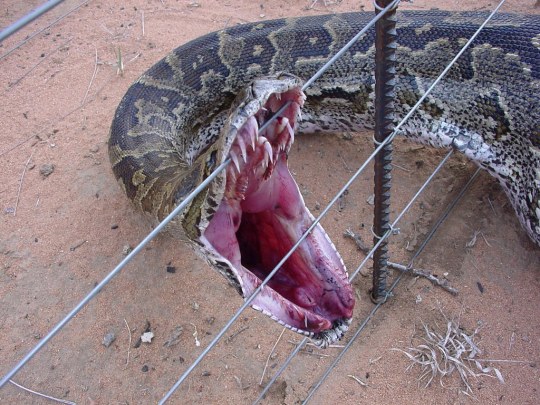
#Python#African rock#biting#electric fence#snake#monster#aggressive#dead#death#Extreme Aggression#bloodthirsty#serpent#cobra#photography#photo
1K notes
·
View notes
Text
How I write Naga characters! (LONG post)
I need somewhere to lay out Ksho’s anatomy and fit it into the lore, so here’s how I personally write half-snake characters. This version is to fit into the TWST lore, but it can work anywhere. I’m not at all an expert, but I am an animal sciences/zoology student, so I hope this is at least interesting o7 Feel free to use these headcanons lol
As a disclaimer, I am writing this about a character based on an Indian rock python, but I’ll leave little notes here and there on how this would work in general. Etymology wise, I will be referring to the character as a Naga, as the character I am writing for is South Asian. The name Lamia could be used for Greek or North African characters :D I will be referring to the ‘human half’ as the anterior body, and the ‘snake half’ as the posterior body, as my character is obviously not a human OR a snake.
To start with, I don’t consider Naga characters to be beastmen, and instead belong to their own classification that includes centaurs, cervitaurs and any reptilian or mammalian ‘merfolk’. They are a convergent species to snake beastmen and humans as a whole and have no real relation. I’ll be starting from the head and working down to the tail.

Ksho only has hair on his head, eyebrows and eyelashes, as is typical for his species. This is implied to have evolved from something similar to feathers, as he uses the serpentine idiom ‘Do feathers still grow from your skull?’ However, it is fine to not explain this. After all, if a platypus can lay eggs, a fictional reptile can grow hair. He can’t grow any other kind of body hair. His pupils are vertically slit. This DOES NOT mean he is venomous!!!! This means he is better suited for dark environments. He doesn’t have visible heat pits, but is written to ‘see’ heat in a way similar to a human seeing heatwaves off of a hot car, by his own description. This is left mostly unexplained 🥲 He has pointed ears with scales on the back, and he has a forked tongue and a vomeronasal organ.
Dentition wise, he has long thin teeth. These teeth curve back into the mouth, and get longer the further in they are. He cannot chew. The back teeth move forward and back as he opens his mouth to make room. His ‘dimples’ are actually the points where the skin on his cheeks can stretch back to. Like snakes, he can’t actually unhinge his jaw. The two halves are not fused, and merely stretch out. His anterior rib cage, collarbone and pelvis also all stretch very far, which he demonstrates in book 3 by pulling his ribs out, much to everyone’s disgust.
Snake teeth are shaped like this to guide food back and to hold prey still, but the addition of opposable thumbs is vastly more helpful. I imagine that the other ‘sharp’ teeth, such as the leech twins can chew to a certain extent, but will typically just swallow manageable bites, like an eel would.
The anterior body is mostly oesophagus, but it also contains the anterior heart and the first lung, similar in size to one that a human would have, the heart slightly larger. They provide oxygen and blood flow to the brain, arms and extremities. They have no nipples or breast tissue! They are reptiles, eat solid food from birth, and hatch with all their teeth. There is never a reason for them to drink milk. There’s also no visible navel, the area covered by belly scales in a pattern similar to stomach hair to make the transition easier. (The area where the yolk connects is further down) The scales wrap around the hips, and can range from only going slightly up the anterior body, to all the way over the shoulders.
Snakes shed all at once. Naga bodies will shed the posterior scales all at once, and the scaleless skin will shed similar to peeling off dried glue 😬
Moving on to the posterior body, the majority ‘leg’ portion of the body and some of the body on the ground is stomach. He also has a posterior lung and heart, which is much larger. He can hold his breath for around thirty minutes without issue. The liver is a little further down, leading up to the gallbladder and small intestine. Then it’ll lead up to the kidneys, reproductive system and the rest of the digestive system. (I’m sure nobody wants me to go on and on about snake anatomy lol)
Like snakes, they are cold blooded, and are susceptible to different illnesses due to this. Their movement is quite reliant on the CNS, meaning sudden movements can lead to injuries, as they could lunge on instinct. They’re very androgynous as a whole, though the females are typically bigger. Constrictors don’t focus on removing the ability to breathe and actually are strong enough to constrict blood flow to the heart. However, with an intelligent species capable of hunting with tools, this isn’t necessary. That sensitivity to vibrations is still very handy though.
Pythons move by pulling themselves straight forwards by ‘walking’ with their ribs. I divert from this, as I imagine Kshoshurankha moving in the swaying side-to-side way. It just better matches his personality, and works better with the humanoid part imo. He moves forward straight when ‘dragging his feet’ or tired
The posterior body ends with the vent, and like snakes, Naga also have spurs residual from evolution. (They’re little protrusions on snakes that are the residual legs from evolution on either side of the cloaca.) After that, the ACTUAL tail begins. Most pythons tails are able to hang on and hold its whole body weight. The fact that the organs go through the whole body gives me the belief that they would not be able to take human potions like the merfolk would, as it would be too big a change and send them into shock. (I imagine the leech twins are around 10-15ish feet, the majority of which being tail, and the most vital organ systems ending at the mid ‘thigh’ area)
This isn’t at all gospel for Kshoshurankha’s lore and was mostly written due to my special interest in anatomy and zoology. I’m 100% open to any questions! (or suggestions) I’ll probably make a second post adding on to the life stages and other random trivia anyways \o/
Kshoshurankha (the character I reference multiple times) is 17 and in high school. Any asks about him that are genuinely disturbing, gory or in anyway unsavoury are not welcome.
#my horrid little guy who probably counts as body horror#asks welcome! I could talk for hours#cw for creepy snake bones and mention of constrictors.#twst oc#kshoshurankha kaasura#twisted wonderland oc#oc#twst#twisted wonderland original character
6 notes
·
View notes
Text

African rock python is a species of large constrictor snake in the family of Pythonidae.
The species is native to Africa. It is one of 10 living species in the genus Python. Africa's largest snake and one of the eight largest snake species in the world
African rock pythons have a thick body covered with colored blotches, often joining up in a broad, irregular stripe. Body markings vary between brown, olive, chestnut, and yellow, but fade to white on the underside.
The head of these snakes is triangular and marked on top with a dark brown “spear-head” outlined in buffy yellow.
African rock pythons are non-venomous and snakes they don’t have fangs.
The snake is widely feared, though it very rarely kills humans
African rock python’s lifespan is 20 – 30 years but the might live even longer in the wild.
You’ve probably heard that snakes have poor eyesight. This is true!
African rock pythons. They aren’t blind, but they don’t perceive much with their eyes; instead, they rely on a complex sensory organs in and around their face.
The tongues of African rock pythons are able to “smell” the surrounding environment. If a prey is nearby, their tongues will sense it.
African rock pythons have heat-sensing pits in their scales that
Helps them locate both predators and prey.
African rock pythons start to mate with each other when they’re around 3 – 5 years old.
African rock pythons are solitary creatures that prefer to live and hunt alone. The exception to this is the mating season; they’ll come together to breed, but it doesn’t last long, and males leave the females as soon as they start nesting.
African rock pythons are most active at night, especially when they’re trying to hunt.
2 notes
·
View notes
Text
The Melodies of South Africa: A Celebration of Its Most Iconic Songs
South Africa, a nation with a vibrant cultural history, has gifted the world with a wealth of musical treasures that have crossed boundaries and left a lasting impact on the global music landscape. From traditional African rhythms to contemporary pop and hip-hop, South African music has evolved over time, reflecting the country's diverse past and the influences of various cultures. In this article, we will delve into some of the most renowned SA Hip hop songs that have captured the hearts of millions and continue to resonate with audiences around the globe.
1. "Pata Pata" by Miriam Makeba (1967)
'''python
Song: "Pata Pata"
Artist: Miriam Makeba
Year: 1967
Genre: Afro-pop

Miriam Makeba, affectionately known as "Mama Africa," was a South African singer and civil rights new hip hop songs 2023 activist who rose to international prominence in the 1960s. "Pata Pata," her most famous song, is an exuberant Afro-pop tune characterized by a catchy melody and infectious rhythm. The song's title translates to "touch touch" in the Xhosa language, and its lyrics describe a popular dance move originating from the townships of Johannesburg. Makeba's powerful voice and magnetic stage presence contributed to the popularization of African music worldwide, paving the way for future generations of South African artists.
2. "The Click Song" by Miriam Makeba (1962)
'''python
Song: "The Click Song"
Artist: Miriam Makeba
Year: 1962
Genre: Traditional African
'''
Another classic South African song by Miriam Makeba, "The Click Song" showcases the unique clicking sounds of the Xhosa language and serves as a celebration of African culture and tradition. Released in 1962, the song became a hit in South Africa and around the world, further solidifying Makeba's status as a global ambassador for African music.
3. Asimbonanga by Johnny Clegg (1987)
'''python
Song: "Asimbonanga"
Artist: Johnny Clegg
Year: 1987
Genre: Afro-pop, Worldbeat
'''
In the 1980s, South African music was heavily influenced by the political climate of the country. Many musicians used their music to speak out against apartheid and call for change. One of the most famous songs from this era is "Asimbonanga" by Johnny Clegg. Released in 1987, the song was a tribute to Nelson Mandela, who was still in prison at the time. The song's lyrics call for Mandela's release and an end to apartheid, making it a powerful anthem for change and unity.
4. "Weeping" by Bright Blue (1987)
'''python
Song: "Weeping"
Artist: Bright Blue
Year: 1987
Genre: Pop, Rock
'''
Another influential song from the anti-apartheid era is "Weeping" by Bright Blue. Released in 1987, the song provided a poignant commentary on the violence and oppression of apartheid. The song's haunting melody and emotional lyrics made it a favorite among South Africans who were fighting for change, and it remains a powerful reminder of the country's struggle for freedom and equality.
5. "Shosholoza" by Ladysmith Black Mambazo (1990s)
'''python
Song: "Shosholoza"
: Ladysmith Black Mambazo
Year: 1990s
Genre: Traditional African, Choral
'''
In the 1990s, South African music began to incorporate more international influences, particularly from the United States. One of the most famous South African songs from this era is "Shosholoza" by Ladysmith Black Mambazo. The song is a traditional South African folk song that was popularized by miners who sang it as they worked. Ladysmith Black Mambazo's version of the song became a hit in South Africa and around the world, and the group went on to collaborate with artists like Paul Simon and Stevie Wonder.
6. "Tito Mboweni" by Cassper Nyovest (2017)
'''python
Song: "Tito Mboweni"
Artist: Cassper Nyovest
Year: 2017
Genre: Hip-hop
'''
In 2000s, South African music continued to evolve, with artists incorporating more electronic and hip-hop influences. One of the most famous South African hip-hop songs is "Tito Mboweni" by Cassper Nyovest. The song was released in 2017 and became an instant hit, with its catchy beat and clever lyrics. The song's title is a reference to the former governor of the South African Reserve Bank, and the lyrics celebrate Nyovest's success and wealth.
7. "SMA" (Send Me Away) by Nasty C ft. Rowlene (2018)
'''python
Song: "SMA" (Send Me Away)
Artist: Nasty C ft. Rowlene
Year 2018
Genre: Hip-hop
'''
Another popular South African hip-hop artist is Nasty C, whose song "SMA" (Send Me Away) became a hit in 2018. The song features a guest appearance by Rowlene, and its emotional lyrics and smooth melody made it a favorite among South African hip-hop fans.
8. "Jerusalema" by Master KG ft. Nomcebo Zikode (2019)
'''python
Song: "Jerusalema"
Artist: Master KG ft. Nomcebo Zikode
Year: 2019
Genre: House, Gospel

In recent years, South African music has continued to evolve and incorporate new influences. One of the most popular South African songs of 2019 is "Jerusalema" by Master KG, featuring vocals by Nomcebo Zikode. The song has become a global sensation, with people around the world creating dance videos to the song. The song's catchy beat and uplifting lyrics have made it a favorite among people of all ages and backgrounds.
Conclusion
These iconic South African songs represent just a small sample of the rich and diverse musical heritage of the country. From traditional African rhythms to contemporary pop and hip-hop, South African music continues to evolve and inspire new generations of artists and listeners. As we celebrate these iconic songs and the artists who created them, we are reminded of the power of music to unite people, transcend borders, and bring joy to our lives.
Website: https://ravenpop.com/
3 notes
·
View notes